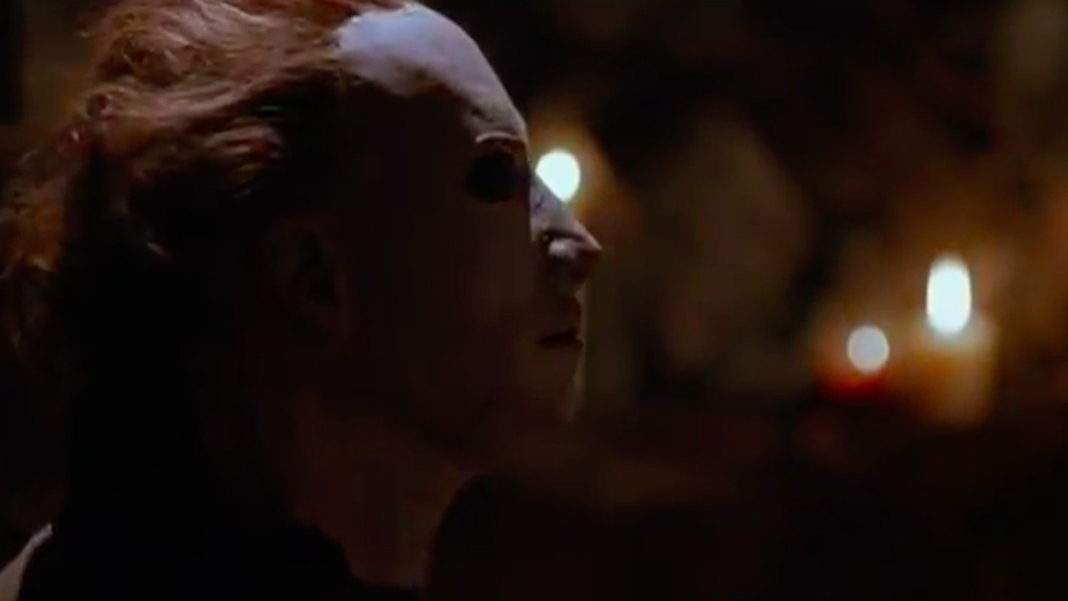
In 1989, director Dominique Othenin-Girard’s Halloween 5: The Revenge of Michael Myers polarized Halloween fans. From the introduction of the character of the Man in Black and the early beginnings of The Cult of Thorn mythos to a psychic connection between uncle and niece, this fifth film in the franchise (and the fourth which followed the iconic character of the babysitter-slashing Myers, who first found fame in originator John Carpenter’s seminal 1978 horror classic Halloween) was indeed a departure from its predecessors.
But what of the man who donned the infamous coveralls and mask for this fifth entry? Thirty years since its release, we caught up with stuntman and actor Don Shanks to discuss his experience working on the film, and touched on topics ranging from the film’s alternate ‘Dr. Death’ opening and deleted scenes to working with young lead Danielle Harris, as well as his prolific career in the film and stunt industry, navigating Hollywood as a Native American, and a whole lot more.
Commencing with his role of Nakoma in the 1974 film The Life and Times of Grizzly Adams and kicking into high gear in 1977 in the hit television series of the same name (you can dig deep into Shanks’ beginnings in Part 1 of our interview series here), Shanks told us that prior to Halloween 5 he’d cut his teeth on an entirely different slasher film, the 1984 flick Silent Night, Deadly Night.
“I was in that film quite a bit,” Shanks offered of the movie, which went on to generate four sequels and the 2012 loose remake Silent Night. “A friend of mine was the stunt coordinator on it and he brought me on to double the Santa.”
Directed by Charles E. Sellier, Jr. (who Shanks had worked with on the Adams films and television series years prior), Silent Night, Deadly Night was written by Paul Caimi, and revolves around the character of Billy, who after seeing his parents murdered as a child at the hands of a Santa Claus suit-wearing criminal, goes on a Yuletide spree-killing of his own some years later.
Cashing in on the holiday-themed slasher craze of the time (its predecessors included Bob Clark’s underrated 1974 film Black Christmas and of course 1978’s immensely successful Halloween, as well as their imitators My Bloody Valentine, Friday the 13th Part 2, The Burning and dozens of others), the production too decided to give their killer a narratively related look. Thusly, Silent Night, Deadly Night’s Billy was presented as a none-too-family-friendly axe-wielding Saint Nick, much to the outrage of parents everywhere.
“Everything with the axe was me, and I did all of the stunts required of Santa Claus,” recalled Shanks of his work in the film, which also required him to double many of Santa’s victims as well, “and (often) we were using real axes.”
Of one of those moments when Shanks was asked to use an actual edged weapon, “We were doing one scene with Linnea (Quigley) where she runs to the telephone and (the character of) Billy throws his axe at her, and they wanted me to cut the telephone cord next to her with the axe,” Shanks offered. “I said, ‘That’s a little too close to her for me. There’s a snowman (decoration) right next to her. Let me throw it at that.’ So I first did it with a rubber axe, which didn’t stick and just knocked the fake wall down. So they fixed the wall, and I did it again, and the second time the axe splitt the snowman and it stuck (in the wall).”
“After the take Linnea said, ‘That was really amazing!’” recalled the actor. “And I said, ‘Well, you know I throw knives and tomahawks.’ And she said, ‘Yeah, but how do you get a rubber one to stick in the wall?’ And I said, ‘The second one wasn’t rubber! They didn’t tell you that I was going to be throwing a real axe at you?’ And she said, ‘No, they didn’t.’”
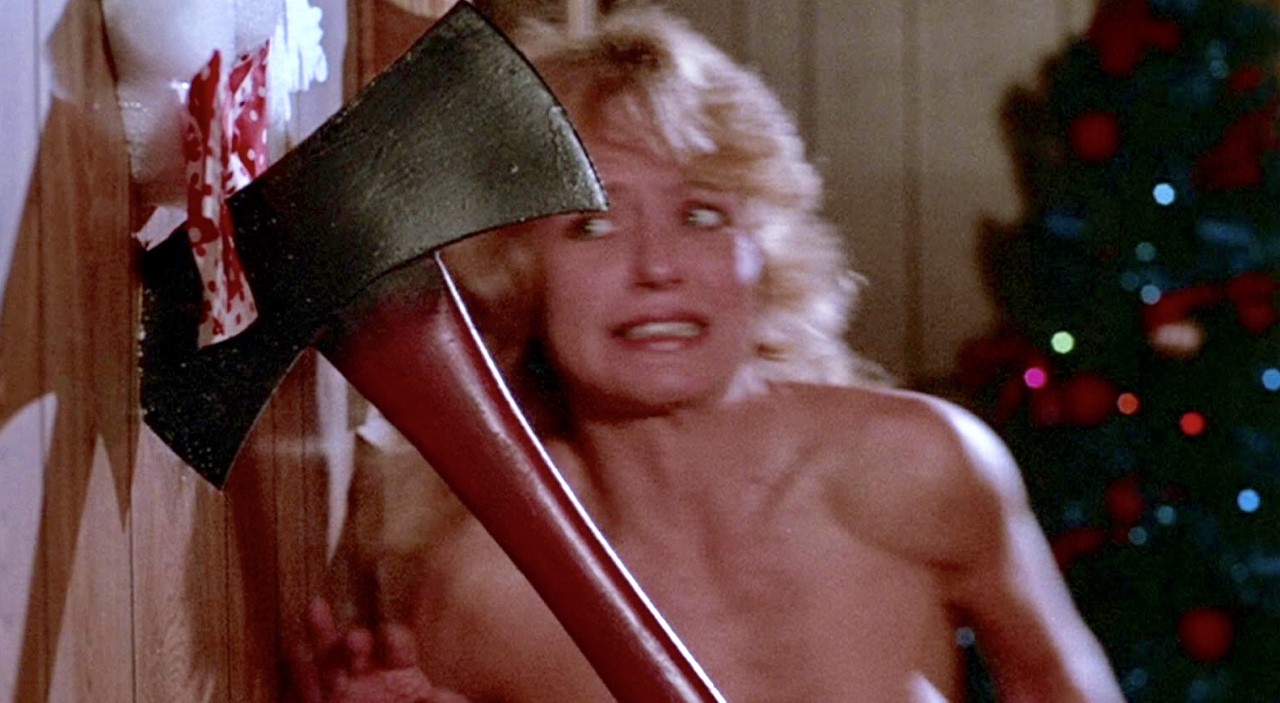 Linnea Quigley in Silent Night, Deadly Night.
Linnea Quigley in Silent Night, Deadly Night.
As it turns out, scantily-clad women weren’t the only ones on Santa’s “naughty list” in Silent Night, Deadly Night.
“In another scene, this kid steals a toboggan and is sledding down a hill,” continued Shanks. “So we had a stunt guy wearing a prosthetic head double the kid, and we put a ghost neck on the top of his own head and built his shoulders up, and I took the real axe and cut his (prosthetic) head off with it. So like I said, we were using real axes.”
Such holiday mayhem was the cause of much controversy on November 9th, 1984, when the film was released to theaters. Lambasted by critics and picketed by parental groups for its content (and television trailers, which aired during hours of family-friendly programming), the TriStar film was pulled from theaters six days into its release. (Wes Craven’s A Nightmare on Elm Street was incidentally released the same day – to less vitriol and far more fanfare).
In the years following Silent Night, Deadly Night, Shanks found work in the television films Louis L’Amour’s Down the Long Hills and Stranger on My Land, as well as the television series Werewolf, before landing the role he’s most known to genre fans for: that of The Shape in 1989’s Halloween 5: The Revenge of Michael Myers.
Of that casting, Shanks recalled, “What it was, was that I had worked with stunt coordinator Don Pike. We had done a CHiPS episode together and had become kind of friends, and then later I was here in Salt Lake City, and he called me and said, ‘We’re doing this movie and I wanted to know if you were available to do stunts.’ I go, ‘Yep, sure.’ And so he calls me back ten minutes later and says, ‘The director would like to talk to you.’ I asked, ‘About doing stunts?’ He says, ‘Well, we’re doing Halloween 5 and we’re considering you to play Michael Myers.’ I go, ‘That’s cool.’ So I went in and talked to (the director) Dominique, and after a little bit he says, ‘I want you to walk for me like wood through water.’ I thought about it for a minute, and then I did it, and he said, ‘OK, perfect.’”
“And that’s how I got the role.”
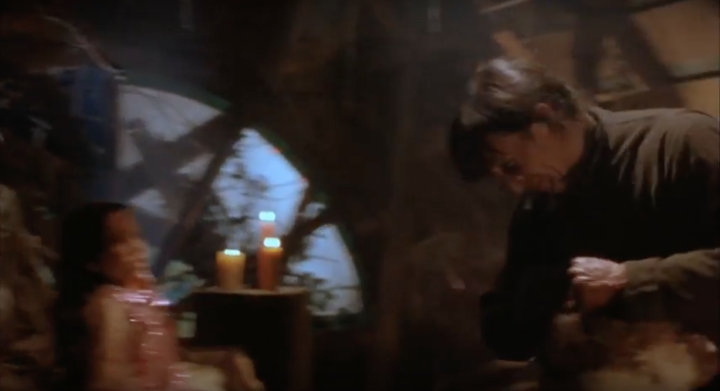 Don Shanks Unmasked in Halloween 5: The Revenge of Michael Myers
Don Shanks Unmasked in Halloween 5: The Revenge of Michael Myers
With its predecessor Halloween 4: The Return of Michael Myers having released to box office success in October of 1988, the series’ producers were eager to duplicate that with an October 1989 follow-up, and thusly, Halloween 5 was moved quickly into production. Ideas pertaining to the continuation of the storyline varied wildly. A first draft by Shem Bitterman followed Alan B. McElroy’s established conceit and found the character of Jamie Lloyd to have become pure evil, following the stabbing of her stepmother in the finale of Halloween 4. That concept was however rejected by producer Moustapha Akkad, who felt that fans’ interest lay in the story of Myers (given the box office disaster that was the Myers-less Halloween III: The Season of the Witch, his concerns were warranted). Ultimately, writers Bitterman, Michael Jacobs and director Othenin-Girard all found writing credits on the shooting script, in a story which picked up directly where the previous film had left off: with Myers falling into a mine shaft beneath a hail of gun fire.
“We started filming a week and a half after I got the script,” recalled Shanks of Halloween 5, which commenced principal photography in May of 1989 in Salt Lake City and its surrounding environs.
As originally scripted and shot, Myers, in true First Blood fashion, escapes via a fiery opening in the side of a mountain, and riddled with bullets floats down the river to the cabin of Dr. Death, portrayed by local Salt Lake City resident Theron “Uncle Thud” Read, in what has become one of the more discussed ‘lost’ scenes of the film franchise.
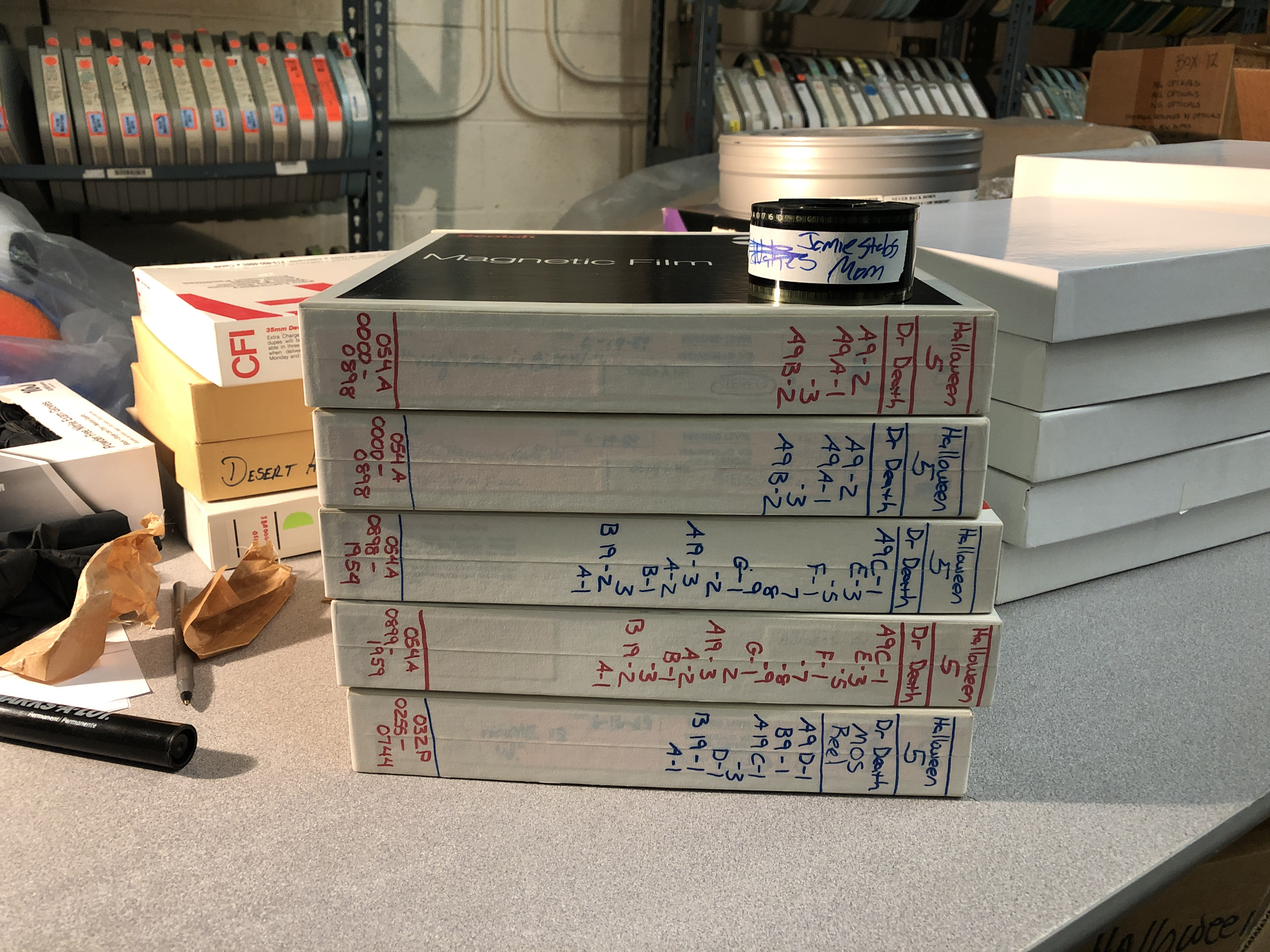 Writer’s note: It may not be lost.
Writer’s note: It may not be lost.
“He was a punk comedian here in town,” recalled Shanks of the actor, comic and fixture on the 1980’s SLC punk scene, who is most remembered for his role of Mark Bojeekus in the 1987 comedy Three O’Clock High, and who passed away on July 20th, 2009. “He had a Mohawk haircut, and was very, very emaciated looking.”
Of the scene, which finds The Shape being discovered by Dr. Death and subsequently brought into the cabin in which a resurrection ritual is conducted, Shanks recalled, “(I was) placed on this stone alter, and all around (the set) were things that the production had gotten from witches, and people that sell you the occult. And there were scrolls and different chants and this and that. And (suspended from) the altar, right above me, was this rock that looked like a stalactite – it was on a string and it would circle. And Dr. Death was doing an incantation on me, and then he tattoos on me the Thorn rune, which is the sign of eternal life. And so he does all these incantations, and on Halloween Eve (one year later) I come back to life.”
“So I put the mask on,” continued Shanks of the results of Myers’ not-quite-grateful response to his resurrection, “and I grab Dr. Death by the throat and pick him up over my head and break his back, and then put him on the altar, and take the stalactite and I go through his chest with it. I thought it was one of my better kills. But (later) Moustapha thought it was too much of the occult type thing. So they decided to shoot it differently.”
Gone was Dr. Death, now replaced by actor Harper Roisman who would in the theatrical release portray an elderly mountain man living in the same cabin (in a direct homage to 1935’s Bride of Frankenstein), as were any signs of the occult, with a talking parrot taking their place.
Of Reads’ performance as Dr. Death, “It was eccentric,” offered Shanks, “and if you saw it you would just go, ‘Wow, that guy looks really weird.’ But it kind of gave the film a little more of an artistic and avant-garde (touch). I mean, it worked perfectly. For what we were doing and the way the (occult) set looked, you want something that isn’t the norm. And the old guy, when we re-shot the opening, Othenin-Girard wasn’t even there. We shot that the last day (of production). I think it was (line producer) Rick Nathanson that directed it. Or it might have been (first AD) Kelly Schroeder. But I’m pretty sure Dominique was not there.”
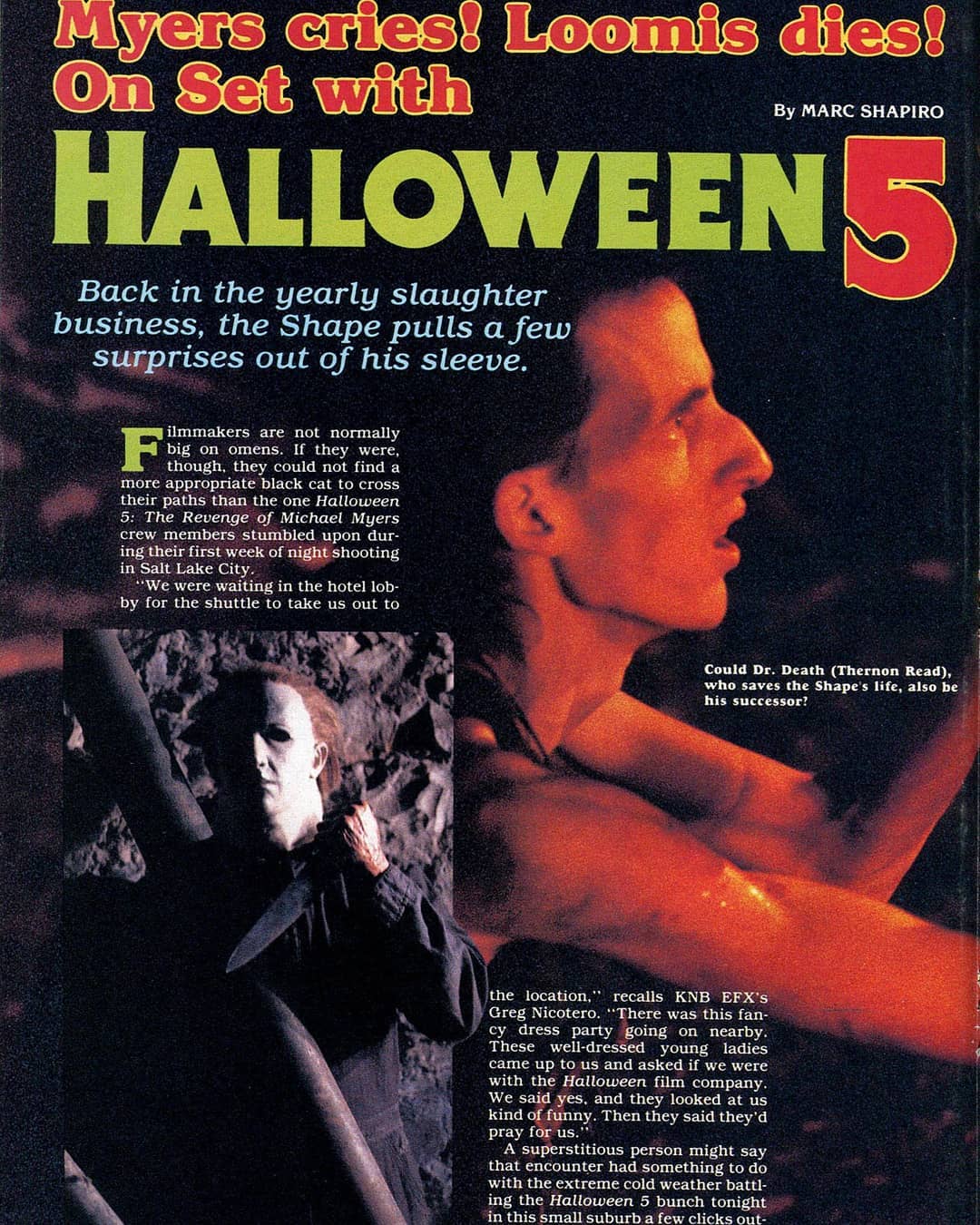 Fangoria Magazine. November 1989. Issue #88.
Fangoria Magazine. November 1989. Issue #88.
Other interesting changes to Myers included those that were visual, as evidenced by The Shape’s mask itself. As designed and provided by Robert Kurtzman, Greg Nicotero and Howard Berger of K.N.B EFX Group (who also served as the film’s special makeup supervisors), Myers’ visage took on an arguably more malevolent look than the ones which had preceded it.
“There were some changes to it after I’d been cast,” said Shanks of the mask. “I believe it had been sculpted off of a mold of Nicotero, and my head’s a little bigger than his. And then Moustapha thought that the nose needed work, so they changed that. And then we put makeup sponges underneath the neck so it would flare out more, because it form-fitted (without them), and it looked more like a face than it did a mask.”
“And then of course we had to change it again later after Donald Pleasence had broken my nose.”
In our upcoming Part 3, Shanks talks working with Danielle Harris and Pleasence (and his hearty swing) in Halloween 5: The Revenge of Michael Myers, those infamous ‘lost’ SWAT massacre scenes, a near fatal Camaro mishap, his introduction to the Halloween fan base, and much, much more.